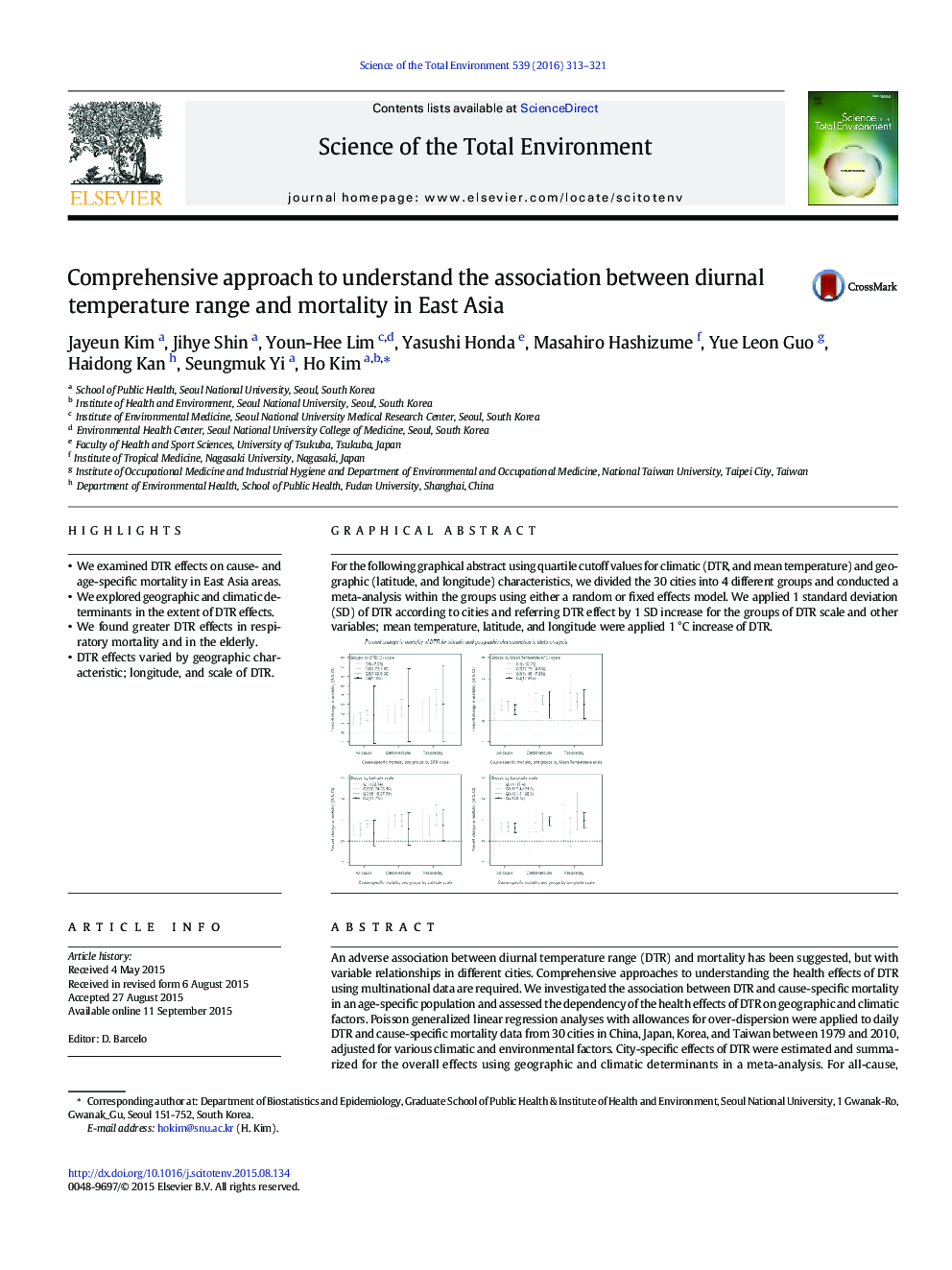| کد مقاله | کد نشریه | سال انتشار | مقاله انگلیسی | نسخه تمام متن |
|---|---|---|---|---|
| 6325047 | 1619745 | 2016 | 9 صفحه PDF | دانلود رایگان |
- We examined DTR effects on cause- and age-specific mortality in East Asia areas.
- We explored geographic and climatic determinants in the extent of DTR effects.
- We found greater DTR effects in respiratory mortality and in the elderly.
- DTR effects varied by geographic characteristic; longitude, and scale of DTR.
An adverse association between diurnal temperature range (DTR) and mortality has been suggested, but with variable relationships in different cities. Comprehensive approaches to understanding the health effects of DTR using multinational data are required. We investigated the association between DTR and cause-specific mortality in an age-specific population and assessed the dependency of the health effects of DTR on geographic and climatic factors. Poisson generalized linear regression analyses with allowances for over-dispersion were applied to daily DTR and cause-specific mortality data from 30 cities in China, Japan, Korea, and Taiwan between 1979 and 2010, adjusted for various climatic and environmental factors. City-specific effects of DTR were estimated and summarized for the overall effects using geographic and climatic determinants in a meta-analysis. For all-cause, circulatory, and respiratory mortality, the greatest city-specific effects per 1 °C DTR were found in Tianjin, China (1.80%; 95% confidence interval [CI]: 0.48, 3.14); Tangshan, China (2.25%; 95% CI: 0.65, 3.87); and Incheon, Korea (2.84%; 95% CI: 0.04, 5.73), respectively, and overall effects across 30 cities were 0.58% (95% CI: 0.44, 0.72), 0.81% (95% CI: 0.60, 1.03), and 0.90% (95% CI: 0.63, 1.18), respectively. Using quartile cutoff values for climatic (DTR, and mean temperature) and geographic (latitude, and longitude) characteristics, we divided the 30 cities into 4 different groups and conducted a meta-analysis within the groups using either a random or fixed effects model. Adverse effects of DTR were more pronounced for those aged â¥Â 65 years and varied according to geographic, longitudinal (0.07%; 95% CI: 0.05, 0.10), and climatic characteristics and the scale of DTR (0.33%; 95% CI: 0.12, 0.55) for overall all-cause mortality. The DTR is a risk factor affecting human health, depending on geographic location and the temperature variation, with particular vulnerability in aged populations.
For the following graphical abstract using quartile cutoff values for climatic (DTR, and mean temperature) and geographic (latitude, and longitude) characteristics, we divided the 30 cities into 4 different groups and conducted a meta-analysis within the groups using either a random or fixed effects model. We applied 1 standard deviation (SD) of DTR according to cities and referring DTR effect by 1 SD increase for the groups of DTR scale and other variables; mean temperature, latitude, and longitude were applied 1 °C increase of DTR.144
Journal: Science of The Total Environment - Volume 539, 1 January 2016, Pages 313-321
